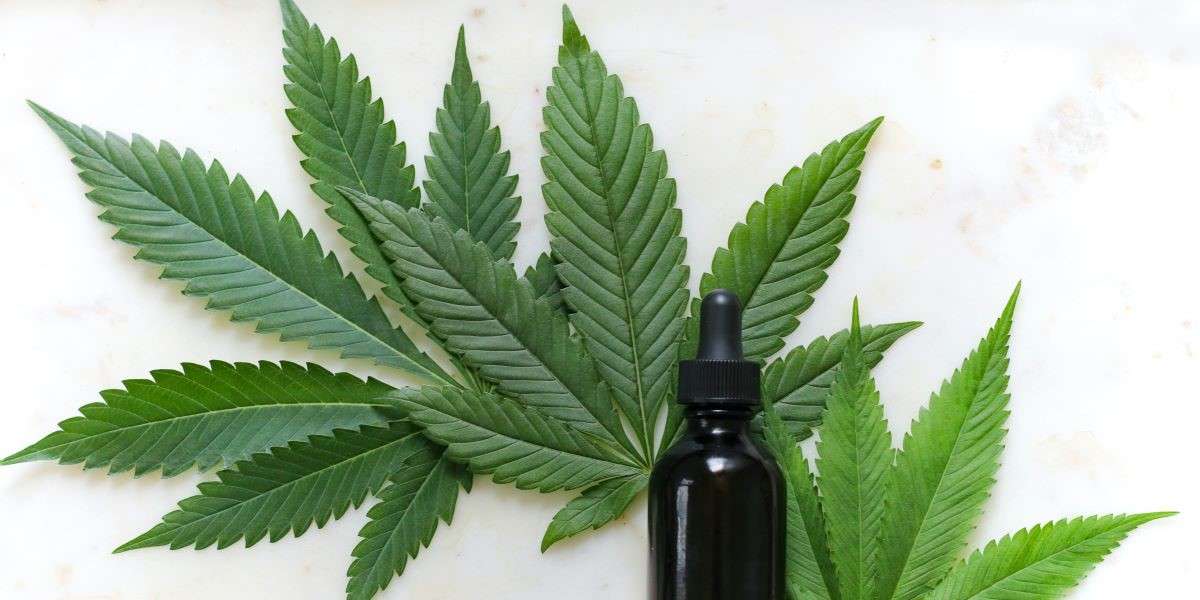Terpenes and Their Potential Therapeutic Benefits

If you’re someone who’s interested in medical cannabis or CBD, chances are you’ve heard about terpenes. These organic compounds, found not only in cannabis but also in many other plants, are responsible for giving them their distinct aromas and flavors.
But did you know that terpenes have a range of potential therapeutic benefits too? From reducing anxiety to relieving pain, terpenes could be an essential element in supporting overall wellness. In this blog post, we’ll explore the potential therapeutic benefits of terpenes and how you can consume them to maximize their impact. So, whether you’re a medical cannabis patient or someone looking to enhance their wellness routine, read on to discover what terpenes can do for you.
What are Terpenes?
Terpenes are a class of organic compounds found in many plants, including cannabis. They are responsible for the distinct aromas and flavors of plants, such as the piney scent of pine needles or the citrusy aroma of lemon. Terpenes are produced in the same glands that produce cannabinoids, and they often work in synergy with them, enhancing the therapeutic benefits of cannabis.
There are over 20,000 different terpenes found in nature, and more than 100 of these have been identified in cannabis. Each terpene has its unique properties and potential therapeutic benefits. For example, some terpenes may have anti-inflammatory or analgesic effects, while others may have anti-anxiety or mood-boosting effects.
Terpenes are produced in the trichomes of plants, which are tiny, crystal-like glands found on the surface of the plant. The production of terpenes is influenced by several factors, such as temperature, humidity, and light exposure. This is why different strains of cannabis can have varying terpene profiles, and why the same strain can have different effects depending on how it was grown and harvested.
In the next section, we’ll explore how terpenes interact with the body’s endocannabinoid system to produce their therapeutic effects.

How Terpenes Work in the Body
Terpenes work in tandem with cannabinoids to produce the therapeutic effects of cannabis. When you consume cannabis, terpenes enter your bloodstream along with cannabinoids and bind to various receptors in your body, including the endocannabinoid receptors.
The endocannabinoid system is a complex network of receptors, enzymes, and endocannabinoids that helps regulate many bodily functions, including mood, sleep, appetite, and pain sensation. Terpenes can interact with these receptors, either enhancing or inhibiting their activity, to produce a range of therapeutic effects.
For example, the terpene myrcene, which is commonly found in cannabis, has been shown to have sedative and muscle-relaxing effects. Another terpene, limonene, has been shown to have antidepressant and anxiolytic effects. And the terpene pinene has been found to have anti-inflammatory and bronchodilatory effects.
The way terpenes interact with the endocannabinoid system and other receptors in the body is still not fully understood, and more research is needed to fully uncover their potential therapeutic benefits. However, early studies suggest that terpenes could be a crucial element in the entourage effect, where the combined effects of cannabinoids and terpenes work together to produce more significant therapeutic benefits than either compound alone.
In the next section, we’ll explore some of the potential therapeutic benefits of terpenes and how they can be consumed.
Common Terpenes and Their Benefits
As mentioned earlier, there are over 100 terpenes identified in cannabis, each with its unique properties and potential therapeutic benefits. Here are some of the most common terpenes found in cannabis and their potential therapeutic benefits:
Myrcene is the most abundant terpene found in cannabis and is known for its sedative and muscle-relaxing effects. It is also found in hops and is responsible for the hoppy aroma of beer.
Limonene is a citrusy terpene that has been shown to have antidepressant and anxiolytic effects. It is also found in the rinds of citrus fruits such as lemons and oranges.
Pinene is a piney terpene found in many plants, including cannabis. It has been found to have anti-inflammatory and bronchodilatory effects.
Linalool is a floral terpene found in lavender and has been shown to have sedative and anxiolytic effects.
Caryophyllene is a spicy terpene found in black pepper and has been found to have anti-inflammatory effects.
These are just a few examples of the many terpenes found in cannabis, each with its unique properties and potential therapeutic benefits. It’s important to note that the effects of terpenes can vary depending on the strain of cannabis and how it was grown and harvested.
Terpenes can be consumed in various ways, such as through inhalation or ingestion. For example, vaping or smoking cannabis can provide immediate relief from symptoms, while consuming edibles or tinctures can provide longer-lasting effects.
Incorporating Terpenes into Your Wellness Routine
Now that we’ve discussed the potential therapeutic benefits of terpenes and how they can interact with other cannabinoids, you may be wondering how you can incorporate them into your medical cannabis routine. Here are some tips on how to get started:
Do your research: Before incorporating any new product or substance into your routine, it’s important to do your research and make sure it’s safe and effective for your specific needs. Look for reputable sources of information and talk to your healthcare provider or a cannabis specialist to get personalized recommendations.
Choose high-quality products: When it comes to terpenes, quality matters. Look for products that are third-party tested and have clear labeling so you know exactly what you’re getting. Consider starting with a low dose and gradually increasing as needed.
Experiment with different strains: Different strains of cannabis contain different combinations of terpenes, so it’s worth experimenting with different strains to find the ones that work best for you. Keep track of your experiences and any changes in symptoms or effects.
Try aromatherapy: If you don’t want to consume terpenes directly, you can also try aromatherapy. Essential oils containing terpenes can be diffused or used in topical applications to potentially provide therapeutic benefits.
Consider a terpene profile test: Some companies offer terpene profile tests that can give you detailed information about the specific terpenes in your cannabis products. This can help you make more informed choices about which products to use and how to use them.
Incorporating terpenes into your medical cannabis routine can be a great way to potentially enhance the therapeutic benefits of cannabis. Just remember to do your research, start slow, and be patient as you experiment to find what works best for you.
Safety and Side Effects
Terpenes are considered safe for use, but it is essential to understand that like any other substance, terpenes also have some potential side effects and safety concerns that one must be aware of.
Allergies: Some people may be allergic to certain terpenes. When using products that contain terpenes, watch out for any allergic reactions such as itching, hives, or difficulty breathing. If any such reaction occurs, stop using the product immediately and seek medical attention.
Interactions with medications: Terpenes may interact with certain medications, such as antidepressants, antihistamines, and sedatives. It is advisable to talk to your healthcare provider before using terpenes if you are already taking any medications.
Dilution: Pure terpenes are highly concentrated and can cause irritation or harm if used undiluted. Always follow manufacturer instructions and use caution when handling and using terpenes. It is recommended to dilute terpenes before using them. Terpenes should be diluted with a carrier oil, such as coconut oil, before use to prevent accidentally ingesting too much of a particular terpene. In diluted form (5% or less), terpenes are non-toxic and safe to use. It is also essential to start with a low dosage and gradually increase until you find the right amount for your needs.
Quality: As previously mentioned, quality is crucial when it comes to terpenes. Always look for products that are third-party tested and have clear labeling to ensure that you’re getting a safe and effective product.
Dosage: It is essential to start with a low dosage of terpenes and gradually increase it as needed to avoid any potential side effects. Keeping track of your experiences and adjusting your dosage accordingly is highly recommended.
Vaporization: If you’re vaporizing terpenes, it’s important to use a high-quality vaporizer and follow manufacturer instructions to avoid potential safety concerns. Poor quality vaporizers can release harmful chemicals along with the terpenes, leading to respiratory issues and other health problems.

In summary, while terpenes are generally considered safe, it’s important to be aware of potential side effects and safety concerns. Always talk to your healthcare provider before incorporating any new products into your routine, and be sure to follow manufacturer instructions and use caution when handling and using terpenes. By being responsible and informed, you can safely enjoy the many potential benefits of terpenes.
Terpenes are an incredibly diverse and fascinating group of compounds that have the potential to offer a wide range of therapeutic benefits. From reducing stress and anxiety to relieving pain and inflammation, terpenes can play an important role in enhancing overall well-being and improving the quality of life for many people.
However, it’s important to remember that not all terpenes are created equal. Quality and purity are essential, and it’s crucial to do your research and choose products that are third-party tested and accurately labeled. Additionally, it’s important to start with a low dosage and gradually increase it as needed while keeping track of any potential side effects or interactions.
At Affordable Marijuana License, we are committed to providing you the resources to help you incorporate the potential benefits of terpenes into your lifestyle. If you’re interested in learning more about how terpenes can enhance your cannabis experience, or if you have any questions about using cannabis for medicinal purposes, we invite you to come visit us at our clinic or contact us online. Our experienced staff can provide you with the guidance and support you need to make informed decisions about your health and well-being.
Thank you for taking the time to learn about terpenes and their potential therapeutic benefits. We hope this article has been informative and helpful, and we look forward to helping you achieve your health and wellness goals
Resources
- Booth JK, Bohlmann J. Terpenes in Cannabis sativa – From plant genome to humans. Plant Sci. 2019 Feb;284:67-72. doi: 10.1016/j.plantsci.2018.02.014. Epub 2018 Mar 6. PMID: 30503147.
- Russo EB. Taming THC: potential cannabis synergy and phytocannabinoid-terpenoid entourage effects. Br J Pharmacol. 2011 Aug;163(7):1344-64. doi: 10.1111/j.1476-5381.2011.01238.x. PMID: 21749363; PMCID: PMC3165946.
- Gertsch J. The Entourage Effect: A Tale of Terpenes and Cannabinoids. Swiss Chem. 2011; 10(11): 705-712.
- Small E. Evolution and classification of Cannabis sativa (Marijuana, Hemp) in relation to human utilization. Bot Rev. 2015 Jun;81(3):189-294. doi: 10.1007/s12229-015-9157-3. PMID: 27158127; PMCID: PMC5312634.
- Kim JH, Kim JH, Lee S, et al. Monoterpenes from thyme (Thymus vulgaris) as potential mosquito repellents. J Am Mosq Control Assoc. 2005 Dec;21(4):80-3. doi: 10.2987/8756-971x(2006)21[80:mfttva]2.0.co;2. PMID: 17233530.
- Jayaprakasha GK, Rao LJ. Chemistry, biogenesis, and biological activities of Cinnamomum zeylanicum. Crit Rev Food Sci Nutr. 2011 Aug;51(7):547-62. doi: 10.1080/10408391003667786. PMID: 21793702.
- Russo EB. The Case for the Entourage Effect and Conventional Breeding of Clinical Cannabis: No “Strain,” No Gain. Front Plant Sci. 2019 Feb 27;9:1969. doi: 10.3389/fpls.2018.01969. PMID: 30891038; PMCID: PMC6409797.
- Johnson R, Wilson M. The therapeutic potential of cannabidiol (CBD) for psychosis, epilepsy and neurodegeneration. Neurotherapeutics. 2020 Apr;17(2):691-696. doi: 10.1007/s13311-019-00808-7. PMID: 31912399; PMCID: PMC7094188.
- Wong H, Cairns BE. Cannabidiol, cannabinol and their combinations act as peripheral analgesics in a rat model of myofascial pain. Arch Oral Biol. 2019 Apr;100:87-93. doi: 10.1016/j.archoralbio.2019.01.001. Epub 2019 Jan 4. PMID: 30640037.
- Johnson JR, Burnell-Nugent M, Lossignol D, Ganae-Motan ED, Potts R, Fallon MT. Multicenter, double-blind, randomized, placebo-controlled, parallel-group study of the efficacy, safety, and tolerability of THC:CBD extract and THC extract in patients with intractable cancer-related pain. J Pain Symptom Manage. 2010 Feb;39(2):167
LEARN MORE
Looking to learn more about the therapeutic benefits of terpenes in medical cannabis? Our comprehensive guide covers everything you need to know, including common terpenes and their benefits, how to use them safely, and more. Contact us at (904) 586-0041 to learn more about incorporating terpenes into your medical cannabis regimen.




